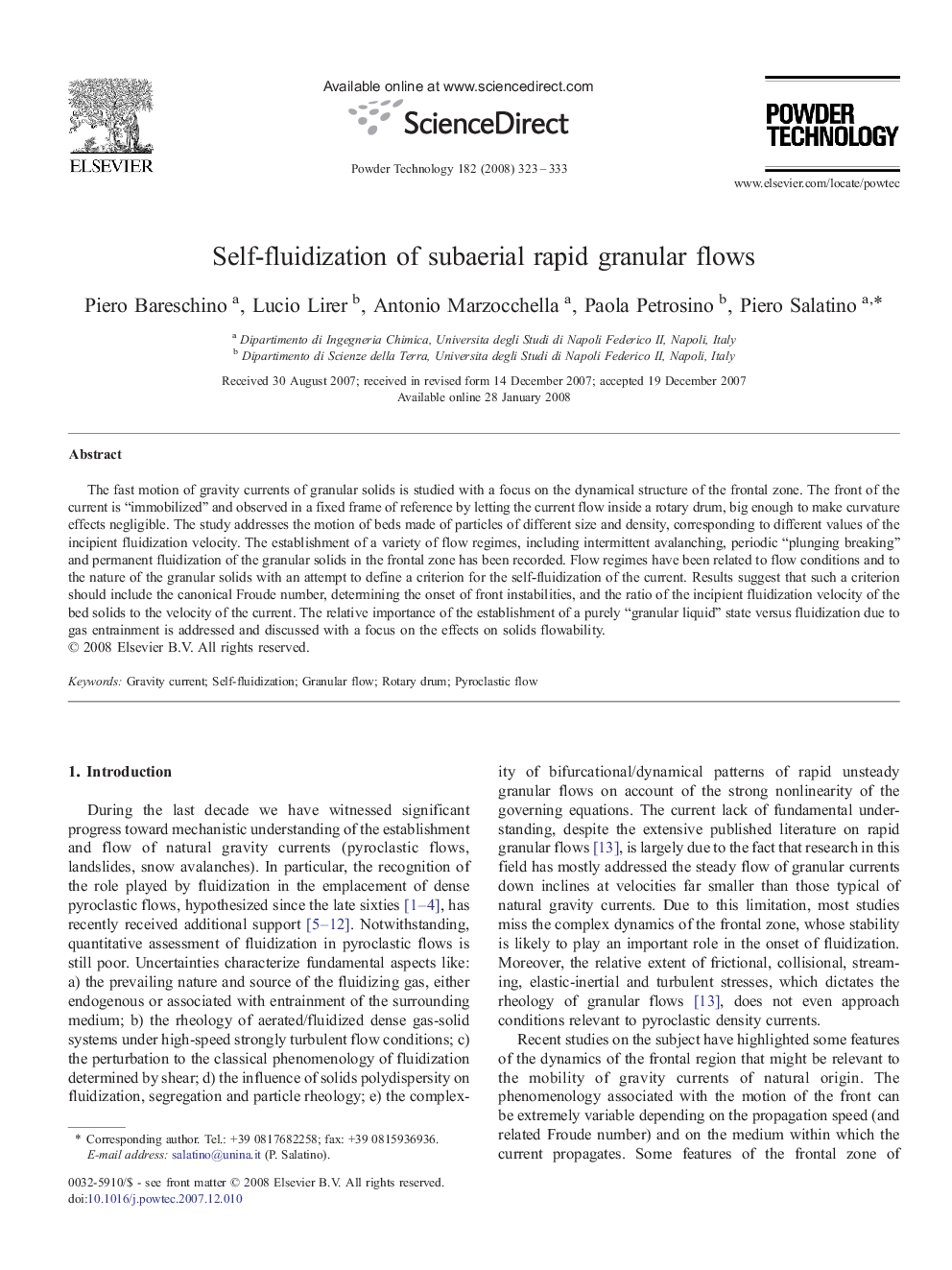| Article ID | Journal | Published Year | Pages | File Type |
|---|---|---|---|---|
| 238997 | Powder Technology | 2008 | 11 Pages |
The fast motion of gravity currents of granular solids is studied with a focus on the dynamical structure of the frontal zone. The front of the current is “immobilized” and observed in a fixed frame of reference by letting the current flow inside a rotary drum, big enough to make curvature effects negligible. The study addresses the motion of beds made of particles of different size and density, corresponding to different values of the incipient fluidization velocity. The establishment of a variety of flow regimes, including intermittent avalanching, periodic “plunging breaking” and permanent fluidization of the granular solids in the frontal zone has been recorded. Flow regimes have been related to flow conditions and to the nature of the granular solids with an attempt to define a criterion for the self-fluidization of the current. Results suggest that such a criterion should include the canonical Froude number, determining the onset of front instabilities, and the ratio of the incipient fluidization velocity of the bed solids to the velocity of the current. The relative importance of the establishment of a purely “granular liquid” state versus fluidization due to gas entrainment is addressed and discussed with a focus on the effects on solids flowability.
Graphical abstractThe fast motion of gravity currents of granular solids of different size and density has been studied with the aid of a rotary drum big enough to make curvature effects negligible. The establishment of a variety of flow regimes, including intermittent avalanching, periodic “plunging breaking” and permanent fluidization of the granular solids in the frontal zone has been recorded. Flow regimes have been related to flow conditions and to the nature of the granular solids. A tentative criterion for the self-fluidization of the current is presented.Figure optionsDownload full-size imageDownload as PowerPoint slide
